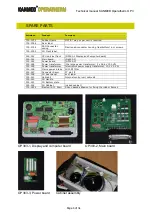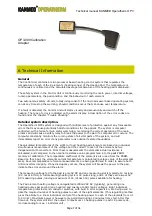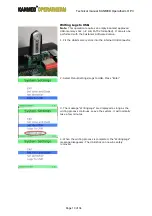
Technical manual
KANMED Operatherm OP3
Page
8
of
34
The heating current is fed via a safety relay, and any errors in the system will cause the safety
relay to break the current.
Apart from a constant on-line supervision of the systems vital safety functions, the system will
automatically turn into a cyclic self test mode for a couple of seconds every 15 min. and perform
an full off-line test of the safety circuits, among other thing turning the safety relay on and off, in
order to verify its integrity.
The Pad is connected to the control unit using a high grade 37 pin D-sub connector (extra thick
gold plating), with a female-female gender changer permanently mounted on the control unit. The
major connector-wear will take part in the female side of the connector, giving the ability to
periodically change the worn part. In the connector, the outermost 2+2 pins are exclusively used
as a safety loop, controlling the safety relay, to guarantee good connection of any intermediate
connectors used for the measuring circuits. Feeding voltage is fed on different pins than the
measuring circuit, reducing the risk of measurement errors. The common Pad feeding current is fed
over eight parallel pins for minimum connector load. All input/output connections are short-circuit
proof.
The Pads connector contains a independent micro processor with the dedicated task of monitoring
the pad feeding voltage at all time, and will break the safety loop if the heating current to any of
the eight elements are more frequent than normally anticipated (>16 of 18 heating pulses) or if
the unit is feeding more energy than 22,5 kWs over a period of 30 minutes (corresponds to 13,9 W
average power output during 30 minutes) to any of the elements. This function will safeguard
against any major short circuit in the control unit, (causing uncontrolled power feed to any, or all,
of the elements), or a temperature calculating error.
Both the control unit and the pad will automatically log events and running parameters into
memory when they are operated, enabling post-analyses to be made of any suspected system
malfunction.








































